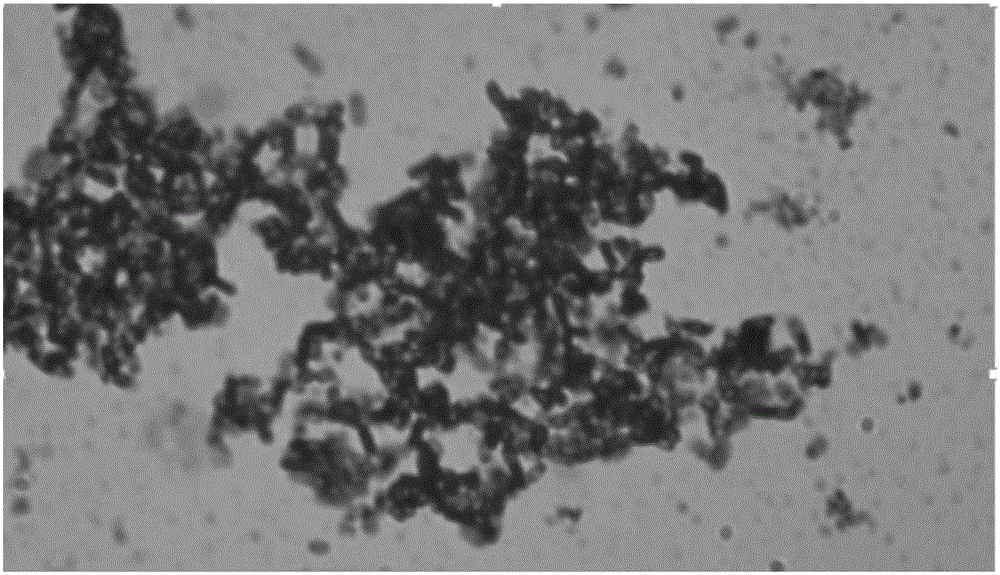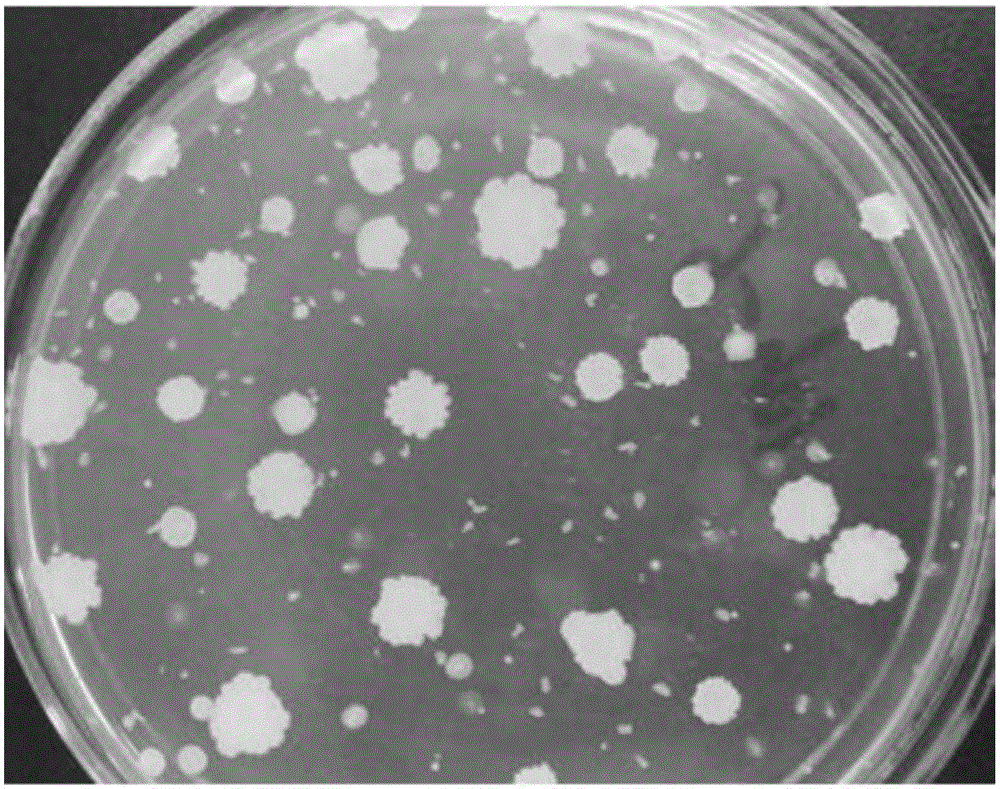Bacillus subtilis and application of bacillus subtilis in degrading organophosphorus pesticide
A technology of Bacillus subtilis and organophosphorus pesticides, applied in the direction of bacteria, microorganism-based methods, and restoration of contaminated soil, etc., can solve the problem that there is no Bacillus subtilis in the degradation of omethoate, and achieve a significant degradation effect, good degradation effect
- Summary
- Abstract
- Description
- Claims
- Application Information
AI Technical Summary
Problems solved by technology
Method used
Image
Examples
Embodiment 1
[0031] Example 1: Isolation and screening of Bacillus subtilis BLCC1-0388
[0032] 1 Test method
[0033] 1.1 Test material
[0034] Soil samples: 20 samples were taken from vegetable greenhouses in Liangzhuang and Fangcun. It is mainly the soil for growing vegetables such as cabbage, spinach, cucumber, potato and tomato.
[0035] Pesticides: Omethoate with a purity greater than 90% was donated by the Plant Protection College of Shandong Agricultural University.
[0036] Inorganic salt medium: NaCl0.5g, MgCl 2 0.5g, K 2 SO 4 0.5g, CaCl 2 0.1g, FeSO 4 0.01g, MnSO 4 0.001g, H 2 01000mL, pH7.0.
[0037] Solid inorganic salt medium: add 1.5% agar powder on the basis of inorganic salt medium.
[0038] Re-screening medium: yeast extract 5g, peptone 10g, NaCl 5g, glucose 2g, distilled water 1000mL, pH 7.0-7.2.
[0039] 1.2 Strain screening method
[0040] Add 1 g / L of omethoate to the inorganic salt medium, 10 g of the soil sample, rotate at 150 r / min, and culture on a s...
Embodiment 2
[0106] Embodiment 2: Preparation of degraded organophosphorus pesticide products
[0107] (1) Preparation of bacterial strain BLCC1-0388 bacterial powder
[0108] The bacteria powder can adopt the following preparation process, and the specific steps are:
[0109] (i) Strain: Bacillus subtilis BLCC1-0388, CCTCC NO: M2015503 was selected.
[0110] (ii) Slant culture: inoculate the lyophilized powder strain of Bacillus subtilis BLCC1-0388 on a solid slant medium, and culture at 37° C. for 24 hours;
[0111] (iii) First-class seed culture: put the cultivated slant into 100mL seed liquid medium with an inoculation loop under aseptic conditions, and culture it on a shaker at 180rpm for 18h at 37°C to obtain first-class seeds liquid;
[0112] (iv) Expanded cultivation: With an inoculum size of 5% (v / v), the primary seed solution was placed in 1000 mL seed liquid medium, and cultivated at 180 rpm on a shaking table at 37°C for 20 hours to obtain a secondary seed solution ;
[0113...
Embodiment 3
[0119] Embodiment 3: the degradation effect (field test) of strain BLCC1-0388 related products to omethoate
[0120] The field test is carried out in Liangzhuang vegetable greenhouses, no vegetables are planted in the field, and the soil collected before spraying the fermented liquid is the initial omethoate concentration, and the bacterial powder prepared in Example 2 is diluted, and the bacterial liquid concentration is 5.0×10 6 cfu / mL, sprayed onto the soil, and dug to a depth of 2cm. Collect soil samples after 1 week, detect the concentration of omethoate, calculate the degradation rate of omethoate, and detect the number of strains in the soil at the same time. The results are shown in Table 7.
[0121] Degradation effect of omethoate in soil by bacterial strain BLCC1-0388 product in table 7
[0122]
[0123] As can be seen from Table 7, the removal rate of omethoate in the soil was 79.06% after spraying the strain BLCC1-0388 product for 7 days. The number of viable...
PUM
| Property | Measurement | Unit |
|---|---|---|
| clearance rate | aaaaa | aaaaa |
Abstract
Description
Claims
Application Information
 Login to View More
Login to View More - R&D
- Intellectual Property
- Life Sciences
- Materials
- Tech Scout
- Unparalleled Data Quality
- Higher Quality Content
- 60% Fewer Hallucinations
Browse by: Latest US Patents, China's latest patents, Technical Efficacy Thesaurus, Application Domain, Technology Topic, Popular Technical Reports.
© 2025 PatSnap. All rights reserved.Legal|Privacy policy|Modern Slavery Act Transparency Statement|Sitemap|About US| Contact US: help@patsnap.com



